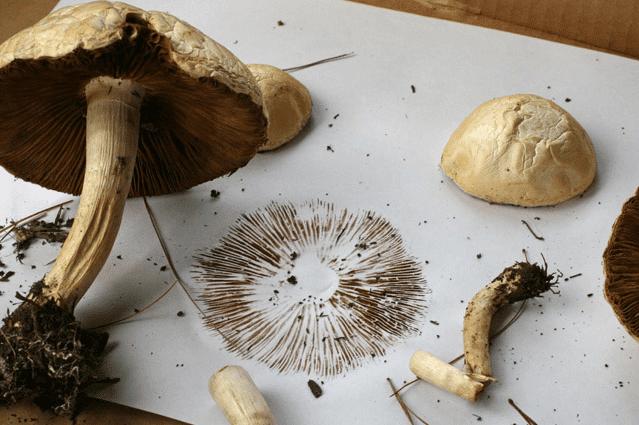
Mushrooms are remarkable organisms that play a critical role in our ecosystems, breaking down organic matter and recycling nutrients back into the soil. But beyond the visible caps and stems lies a world of microscopic spores that facilitate the spread and growth of these fungi. While these spores are essential for the life cycle of mushrooms, they can also have implications for human health. In this article, we’ll explore the potential dangers of mushroom spores, focusing on respiratory effects, possible allergies, and the nature of spores from psychoactive species.
Respiratory Effects of Breathing in Mushroom Spores
Mushroom spores are tiny, lightweight particles released in vast quantities by the fruiting bodies of fungi. These spores can remain airborne for long periods, making it easy for people to unknowingly inhale them. For most individuals, breathing in a small number of mushroom spores is harmless. However, prolonged or heavy exposure can lead to respiratory issues, particularly in sensitive individuals.
When inhaled, mushroom spores can irritate the respiratory system, especially in people who work in environments with high spore concentrations, such as mushroom farms or composting facilities. This can lead to a condition known as “mushroom worker’s lung,” a form of hypersensitivity pneumonitis. Symptoms include coughing, shortness of breath, fatigue, and a general feeling of being unwell. Over time, if exposure continues, this condition can lead to chronic lung problems, including fibrosis.
Allergic Reactions to Mushroom Spores
In addition to respiratory irritation, some people may develop allergic reactions to mushroom spores. These allergies are similar to those caused by pollen, dust, or animal dander. When inhaled, the spores can trigger the immune system to overreact, leading to symptoms such as sneezing, nasal congestion, itchy eyes, and wheezing. In severe cases, exposure can cause asthma attacks or other serious respiratory conditions.
Allergic reactions to mushroom spores are relatively uncommon but can be problematic for those with pre-existing allergies, asthma, or weakened immune systems. Individuals who suspect they are allergic to mushroom spores should take precautions, such as wearing masks when working in environments with high spore concentrations and avoiding areas where mushrooms are actively releasing spores.
Psychoactive Species: No Effects from Breathing in Their Spores
Some species of mushrooms, particularly those in the genus Psilocybe, are known for their psychoactive properties. These mushrooms contain compounds like psilocybin and psilocin, which can induce hallucinations and alter perceptions when ingested. However, it’s important to understand that the psychoactive effects are associated with the consumption of the mature mushroom, not the spores themselves.
Mushroom spores from psychoactive species do not contain psychoactive compounds. This means that simply breathing in the spores of these mushrooms will not cause any psychoactive effects. The psychoactive compounds develop during the growth of the mushroom, specifically within the fruiting body, and are not present in the spores. Therefore, concerns about accidentally inhaling spores from psychoactive mushrooms and experiencing hallucinations or other mind-altering effects are unfounded.
Conclusion
Mushroom spores are a natural and necessary part of the fungal life cycle, enabling mushrooms to reproduce and spread across various environments. While most spores are harmless, they can pose risks to respiratory health, particularly for those with allergies or who are frequently exposed to high concentrations of spores. However, it’s important to note that spores from psychoactive mushrooms do not contain psychoactive compounds and are not capable of causing mind-altering effects when inhaled.
Understanding the potential dangers of mushroom spores can help individuals take appropriate precautions, especially in environments where exposure is likely. For the average person, encountering mushroom spores in nature is generally safe, but awareness of their potential effects is always beneficial.



